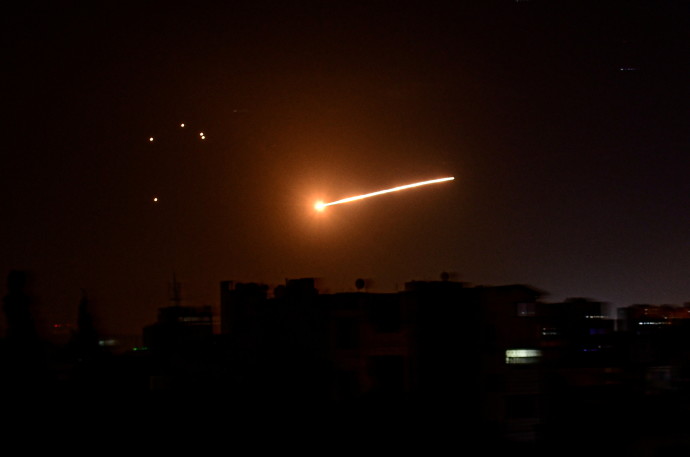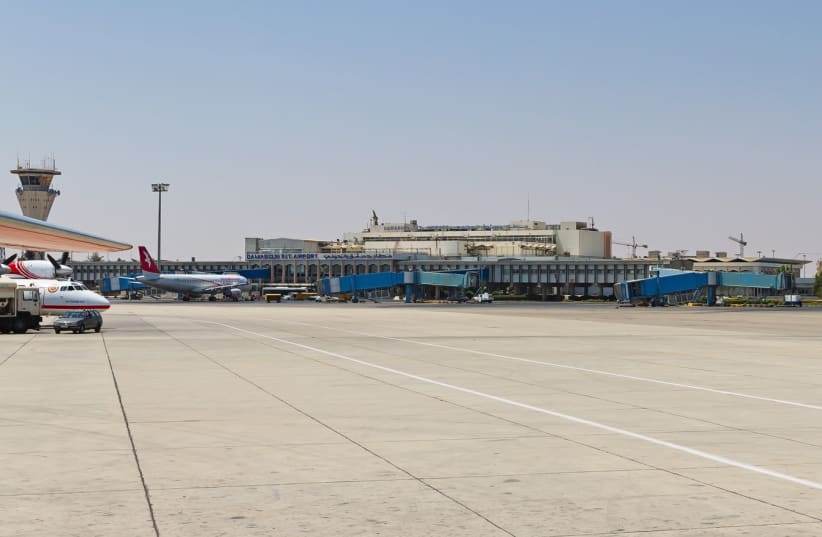Syria blamed Israel for an airstrike on Damascus International Airport overnight between Sunday and Monday, which put the airport briefly out of service. This was the second attack on the airport since June.
Iran uses airports in Syria to transport weapons, often moving them to Syria or to Hezbollah in Lebanon.
“Syria state media has confirmed that Damascus International Airport has suffered major damage – including to runways – following an Israeli missile attack,” Al Jazeera reported in June. “The Syrian Transport Ministry said in a statement on Saturday that runways remained out of service at the capital’s airport following the attack on Friday, the state-run Syrian Arab News Agency (SANA) reported.”
Sunday night’s attack is reminiscent of an incident on September 6, when airstrikes hit Aleppo Airport. Iran had shifted operations to Aleppo because it is located further north in Syria.
The weekend airstrike is raising eyebrows. Jason Brodsky, policy director of United Against Nuclear Iran, tweeted: “With [Iranian President Ebrahim] Raisi’s visit to Syria on Tuesday being postponed over tensions between Iran and Damascus over its demand for sovereign concessions, apart from the operational needs of the strike, this comes at an interesting time. It will also be important to watch how this impacts the uptick in flights transferring arms to Hezbollah using Beirut Airport instead of DIA [Damascus International Airport].”
With Raisi's visit to #Syria on Tuesday being postponed over tensions between #Iran and Damascus over its demand for sovereign concessions, apart from the operational needs of the strike, this comes at an interesting time. 1/2 https://t.co/MsvvX2RcaN
— Jason Brodsky (@JasonMBrodsky) January 2, 2023
In December, reports said Hezbollah was looking to obtain weapons from Iran via Beirut Airport. This raised tensions at the time. It remains unclear if Hezbollah then sought to shift to a different route.


Hezbollah is currently under the spotlight because of the death last month of an Irish peacekeeper in an area it controls in southern Syria. After a number of canceled appearances, reports also circulated over the weekend that Hezbollah leader Hassan Nasrallah’s health is deteriorating.
Iran has been showering praise on late Islamic Revolutionary Guard Corps Quds Force commander Qasem Soleimani over the past week, ahead of the anniversary of his death.
“By strengthening the physical, spiritual and mental aspects of the resistance, the general preserved, equipped and revived this everlasting and growing phenomenon against the Zionist regime and the influence of the US and other arrogant countries,” Iranian Supreme Leader Ali Khamenei said Sunday.
“By strengthening the physical, spiritual and mental aspects of the resistance, the general preserved, equipped and revived this everlasting and growing phenomenon against the Zionist regime and the influence of the US and other arrogant countries.”
Ali Khamenei
Damascus airport puts both runways out of service
The incident at Damascus Airport put both runways out of service, although it was unclear if this was due to the strike or merely caution.
The strike left a number of casualties in its wake. “An opposition war monitor reported the Israeli strikes hit the airport as well as an arms depot close to the facility south of Damascus,” the Associated Press reported. “The Britain-based Syrian Observatory for Human Rights said four people were killed in the strike.”
The strike is an important symbol because it comes at the beginning of the new year and when Israel has a new government led by Benjamin Netanyahu.
Israel has for the last decade been waging a “war between the wars” (also known as MABAM) to prevent Iranian entrenchment in Syria. This has included thousands of airstrikes, some of which the Syrian regime has said targeted airports. In 2018, airstrikes reportedly targeted the “glass house” building near the airport, which is used by the IRGC.
Mazzeh Military Airport in Damascus was also targeted in November 2019. The “glass house” was again damaged in November and appears to have since been abandoned.
Iran uses airports to move important munitions. These may include drones, precision-guided munitions or even air-defense systems. In 2018, Iran tried to move its 3rd Khordad air-defense system to the T-4 Airbase near Palmyra. That system was reportedly destroyed in an airstrike as well.
